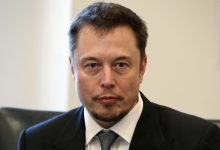At minute 38:20 on Tesla’s Q4 2019 earnings call last week, CEO Elon Musk starts talking about batteries. Specifically, he cites battery production as they key bottleneck to Tesla’s growth.
At minute 41:58, Elon drops this: “We have to scale battery production to crazy levels, to levels that people can’t even fathom today.” Musk is known for bold statements, but this one can’t be dismissed – it’s coming from the company that more than doubled global lithium-ion battery demand with its first factory.
While Tesla is the sustainable technology investment darling of the moment, there is a big missing slice of the critically important investment pie, and it is this.
How is Tesla dealing with ESG risk around its battery metal supply chain?
Tesla has managed to design a vegan car fit-out, but along with other technology companies is named in a lawsuit alleging knowledge of human rights abuses in the cobalt supply chain. It is an uncomfortable contradiction for this avid Tesla fan.
Musk has previously deflected cobalt criticism, highlighting that Tesla has reduced cobalt use to a small fraction of its battery chemistry and that it plans to engineer it out altogether. Nickel is really Tesla’s key battery ingredient – approximately 40kg of nickel goes into Tesla car, and is a key to energy density.
With Panasonic supplying almost 50% of all Nickel used in EV’s for 2019 H1, most of that due to its nickel-rich NCA cells for Tesla, we need to follow the supply chain back to Panasonic’s supplier Sumitomo Metal Mining, to see where the nickel comes from. And when it comes to growth in nickel supply, almost all roads point back to Indonesia.
It does not take a leap of imagination to see how clearing forests in Indonesia to make way for mining, a place where earthquakes and torrential tropical storms are annual events, poses a significant ESG risk.
Last year, these factors combined to cut off Nickel supply routes temporarily, in the dry season no less, and Nickel mining has been clearly linked to environmental and social risk, “turning the seas red”, blamed for structural decline in fisheries, and health problems in local communities.
Vale, another major Nickel mining player in Indonesia, was thrown into the global spotlight in 2019, after a tailings dam wall collapsed in Brazil, killing hundreds and leaving the mining giant exposed to criminal action.
Yet against this backdrop, forces are in play to ramp up nickel mining and battery metal production in Indonesia, with a ban on export of ore from Indonesia being used as leverage to attract investment in value adding – turning ore into battery grade chemicals before being exported.
Global mining giants from China, Japan and Brazil are all on record talking about ramp up plans for Indonesia, as they scramble to supply the expected 15x increase in battery grade nickel out to 2025.
By 2030, batteries could be a bigger user of Nickel than the steel industry, an enormous transformation from where we are today.
For investors, the warning lights should be flashing amber, if not red. Battery metal supply chain risks are already acute, being highly dependent on cobalt from a known conflict zone (DRC) where corruption is considered rife, and being highly dependant on Nickel from small island nations where geography and politics are a deadly cocktail.
What could go wrong, as demand for these metals go through a once in a lifetime boom?
These supply chain risks are already acute with global EV demand bouncing around 2m cars per annum. Tesla’s ambition alone, to grow 50%/pa, would put it at 4m cars per annum by 2025.
As the big three (VW, Hyundai, Toyota) race to stay relevant in the face of the existential Tesla threat, and we go to global supply of 30m EV+ by 2025, it is almost guaranteed that battery metal supply chain risks will materialise, and trigger repercussions across the investment universe.
Criminal charges are a genuine threat for mining executives, and potentially the investors that stand behind them, in the race to supply the battery metal boom.
Are investors ready to unpack and honestly look at the ugly side of this decade’s biggest investment theme? Is Australia open eyed to the opportunity it creates for our mining industry?
Battery metals could be for Australia in the 21st century, what oil and gas was to Norway in the 20th, setting us up for structural budget surplus, and a shared sovereign wealth the envy of the world.
Let’s not stand by and watch that opportunity disappear. Let’s dig it, for all Australian’s.
Tosh Szatow is a clean energy entrepreneur and an agitator for an Australian Sovereign Wealth fund focused on battery metal mining.










